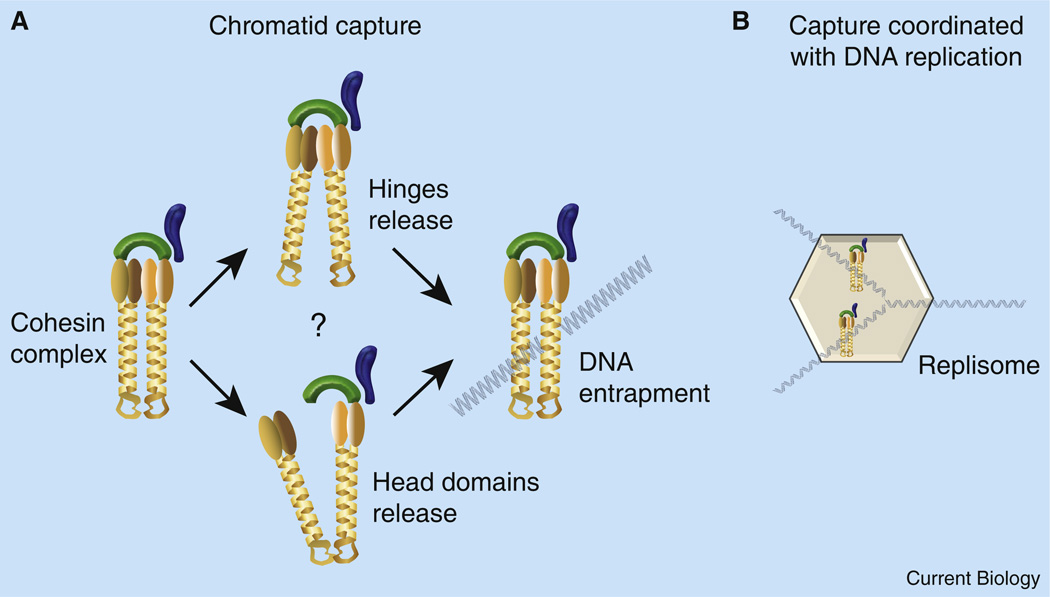Figure 2. Chromatid capture.
(A) Current models suggest that Smc1/3 subunit interactions are dynamic: either hinge dimerization domains or ATPase globular head domains may transiently let go. DNA is then thought to enter the exposed lumen, becoming trapped upon reformation of Smc1/3 subunit interactions. Other models of cohesin association with chromatin (lateral binding, filamentous or spiraled structures) are not shown. DNA is depicted in a ‘naked’ state — note that a single 30 nm compacted chromatin fiber would completely fill the proposed lumen and distort the coiled-coil domains of the Smc1/3 complex (not shown). (B) Cohesin deposition and chromatid capture may be coupled to DNA replication. Deposition factors Scc2 and Scc4 are not shown; leading and lagging replisome complexes are simplified to a large hexagon.

